This Is What It Looked Like The Last Time New York City Had A Curfew
Race and police brutality were at the root of the 1943 curfew, which was issued after a white police officer shot a black soldier and protests broke out.
Kate Bubacz BuzzFeed News Photo Director Posted on June 2, 2020

The last time New York City had a curfew, it was imposed by then-mayor Fiorello La Guardia during World War II. It was in response to what was known as the Harlem riots, which started on Aug. 1, 1943, when a young Army private was shot by a white police officer in the Hotel Braddock uptown.
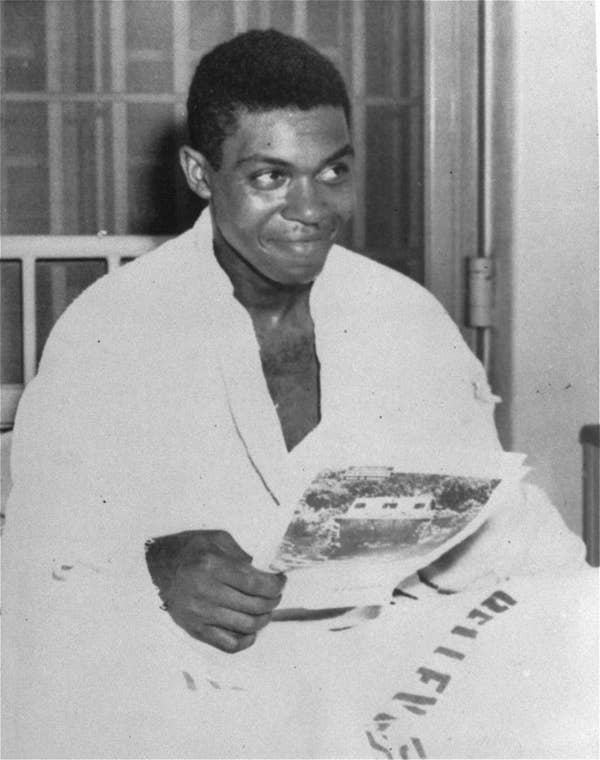
AP Photo
Private Robert Bandy in the Bellevue Hospital prison ward, where he was taken after being shot in the shoulder by a New York City patrol officer, Aug. 2, 1943.
Private Robert Bandy, a young black man on leave from his New Jersey posting, interfered in the arrest of a woman at the hotel and got into a fight with the white police officer. The officer alleged that Bandy tried to grab his nightstick, causing him to discharge his gun. Bandy was wounded in the shoulder and taken to the hospital, but rumors that he had been killed sparked protests.
Tensions around race were already running high, with Jim Crow laws still commonplace in the South. At the same time, black service members were being treated as second-class citizens in segregated military units, despite their contributions to the ongoing war effort. The allegation that a white officer had shot a black soldier resulted in two days of riots, during which hundreds were injured, scores arrested, and dozens of stores — primarily white-owned ones — destroyed.
According to the New York Daily News, La Guardia said the rioting had been "instigated and artificially stimulated" by "radicals." The same publication cited Adam Clayton Powell Sr., the Harlem pastor and activist, blaming "a callous white power structure." La Guardia instituted a 10:30 p.m. curfew, which until this week's protests was the last time the entire city of New York was under curfew.
Within a few days, order was restored in Harlem, Bandy made a full recovery, and the white officer was placed on probation for a year.
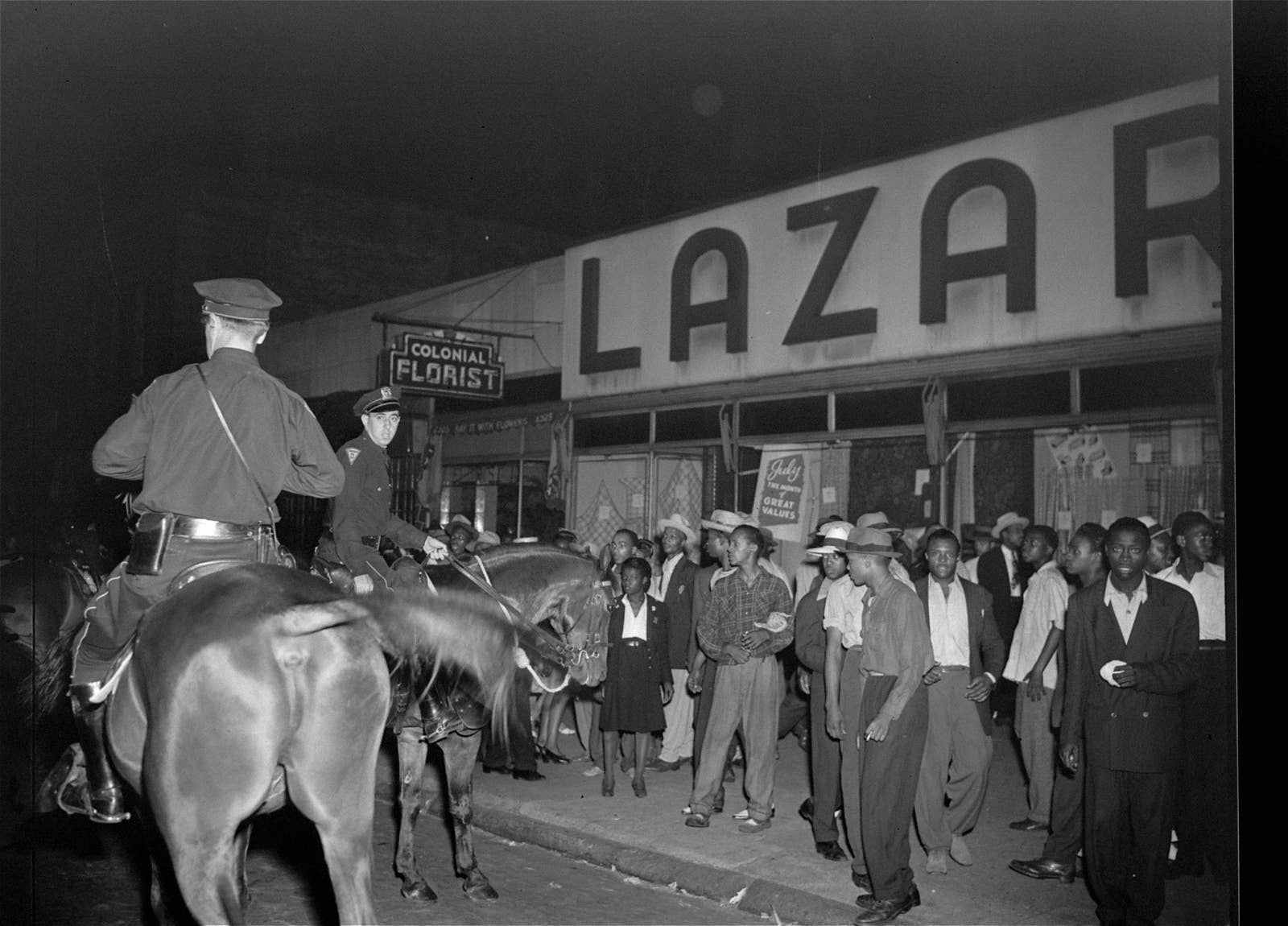
AP Photo
Mounted police officers patrol a street in Harlem, New York, Aug. 2, 1943.
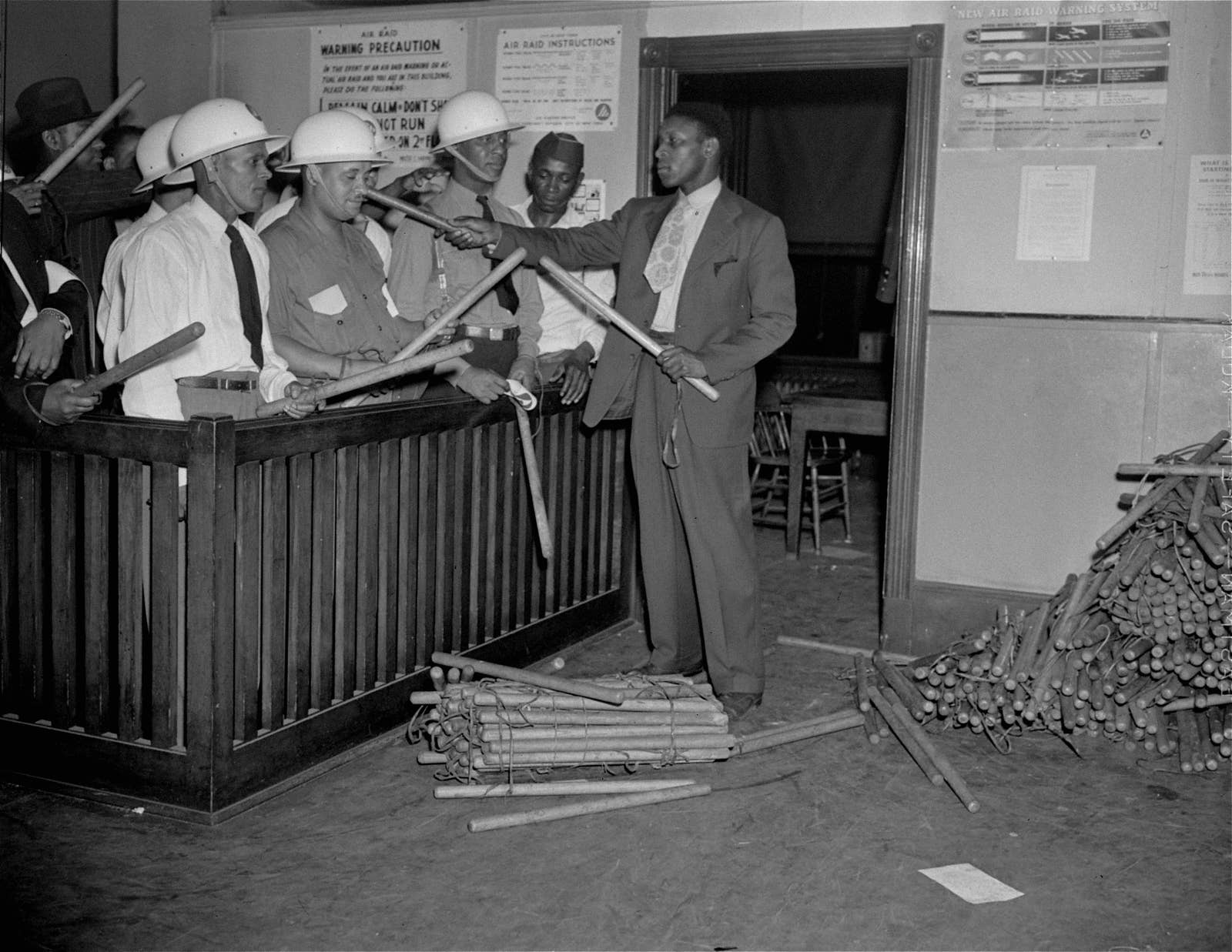
AP Photo
Nightsticks are handed out to steel-helmeted volunteers in the police station on 123rd Street in Harlem, Aug. 2, 1943.
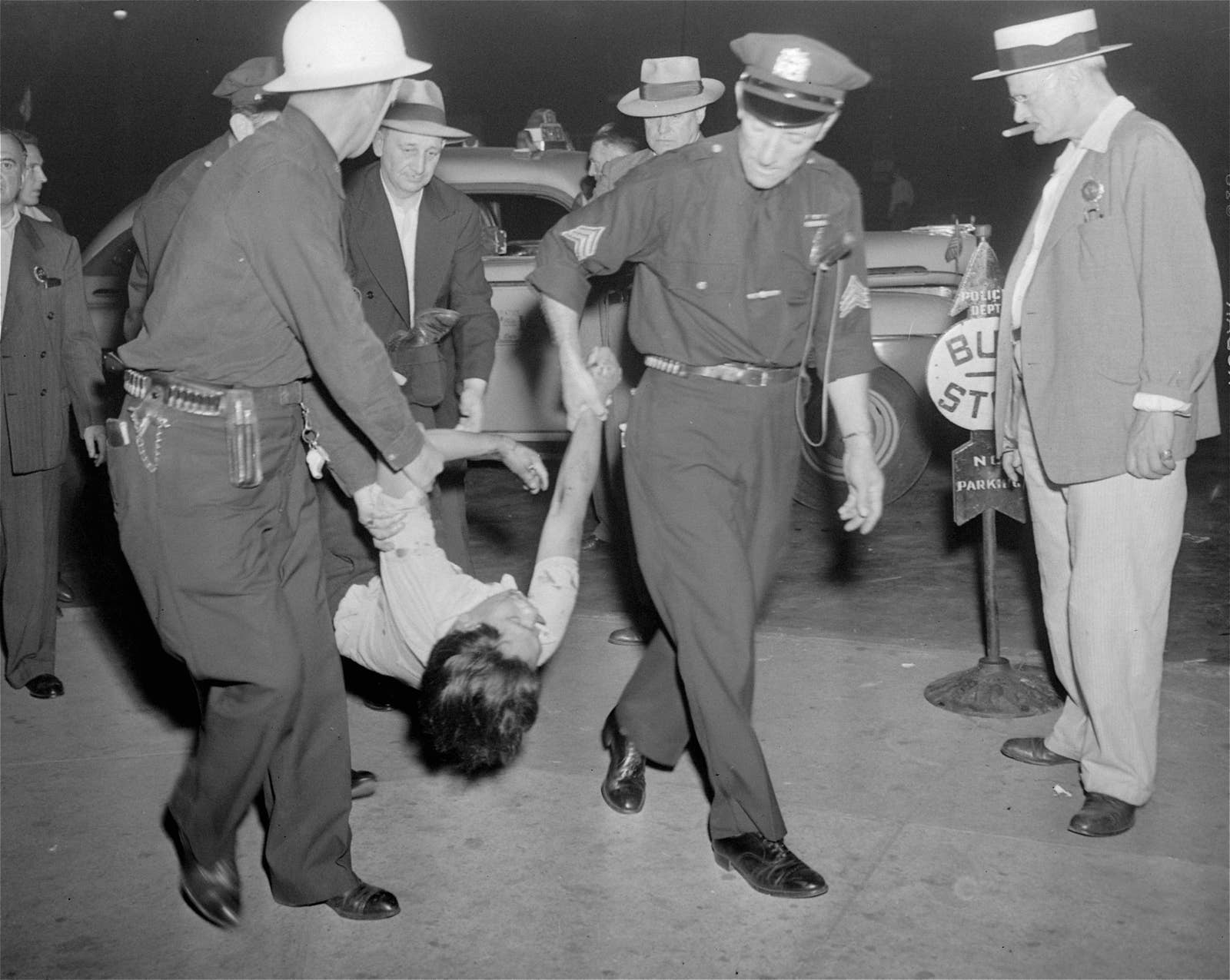
/ Associated Press
Police carry an injured unidentified man into Sydenham Hospital in Harlem during the riots, Aug. 2, 1943.

Tom Fitzsimmons / AP
Officers assist people who were injured in street battles into Sydenham Hospital in New York, Aug. 2, 1943. Six people were killed in the riots.
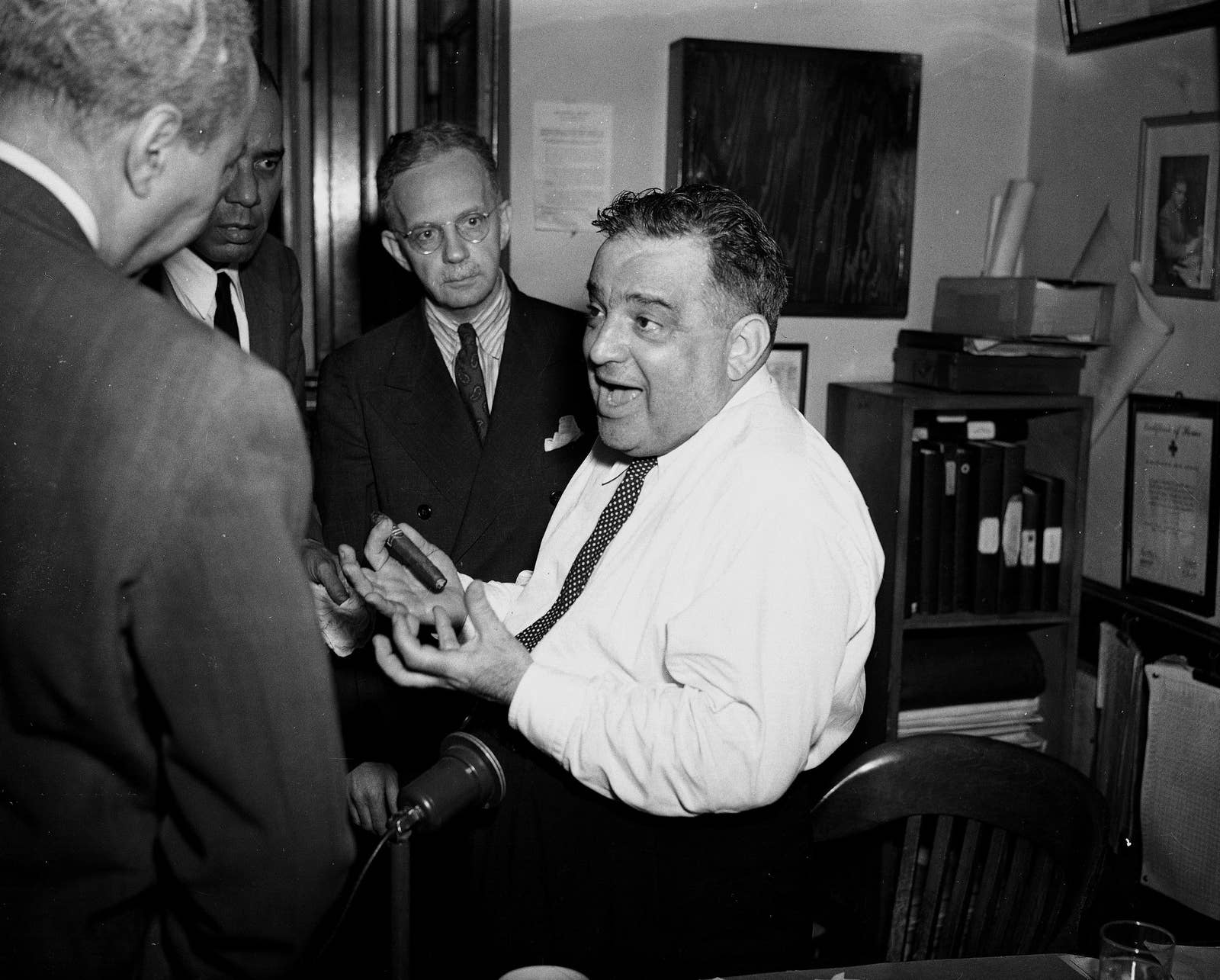
AP Photo
New York City Mayor Fiorello H. La Guardia (center) discusses the protests at the 123rd Street police station, Aug. 2, 1943.
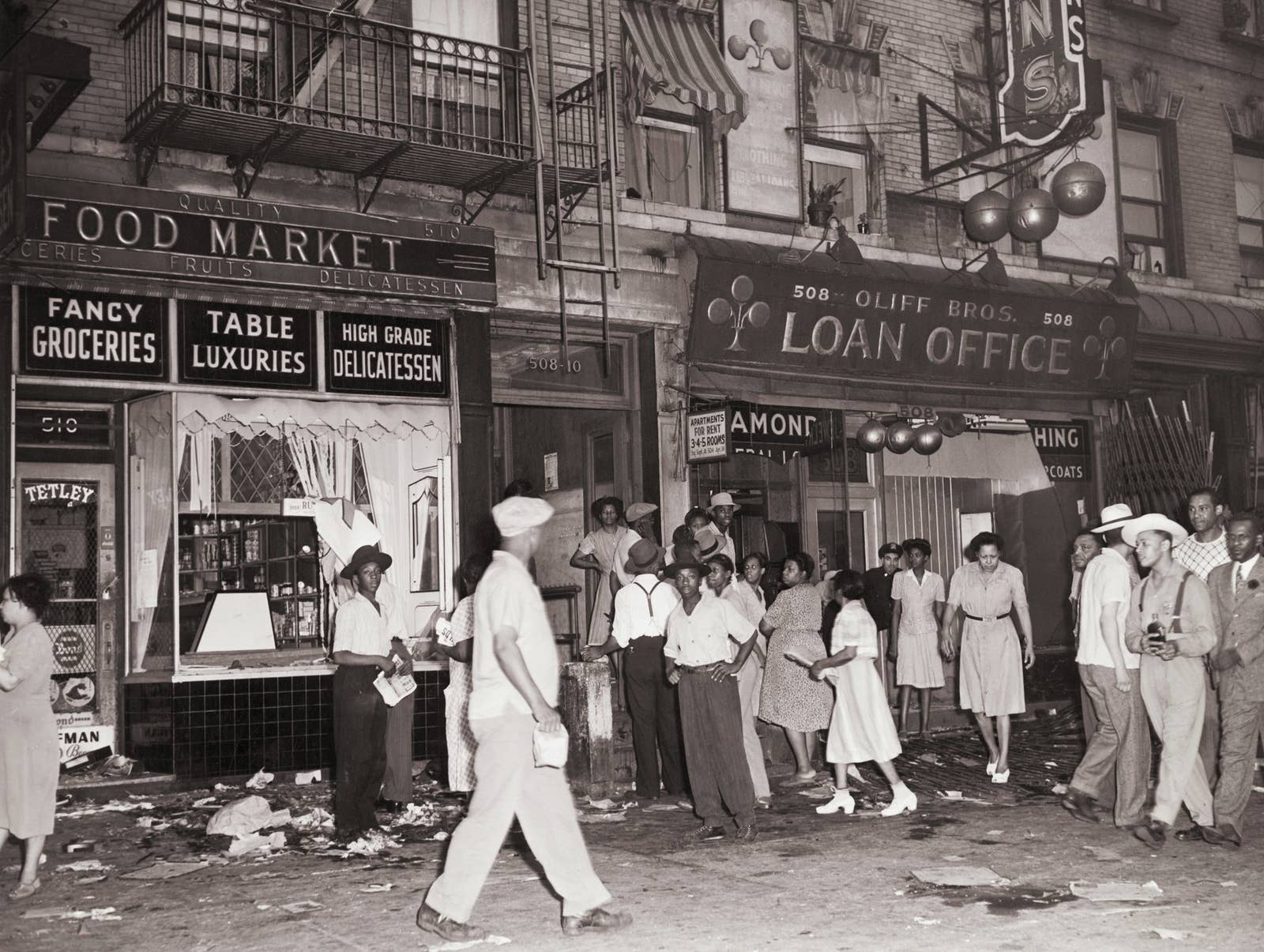
Bettmann Archive / Getty Imag
Crowds in front of shattered store windows in Harlem, 1943.

AP Phot
A liquor store window smashed during unrest in Harlem, Aug. 2, 1943.
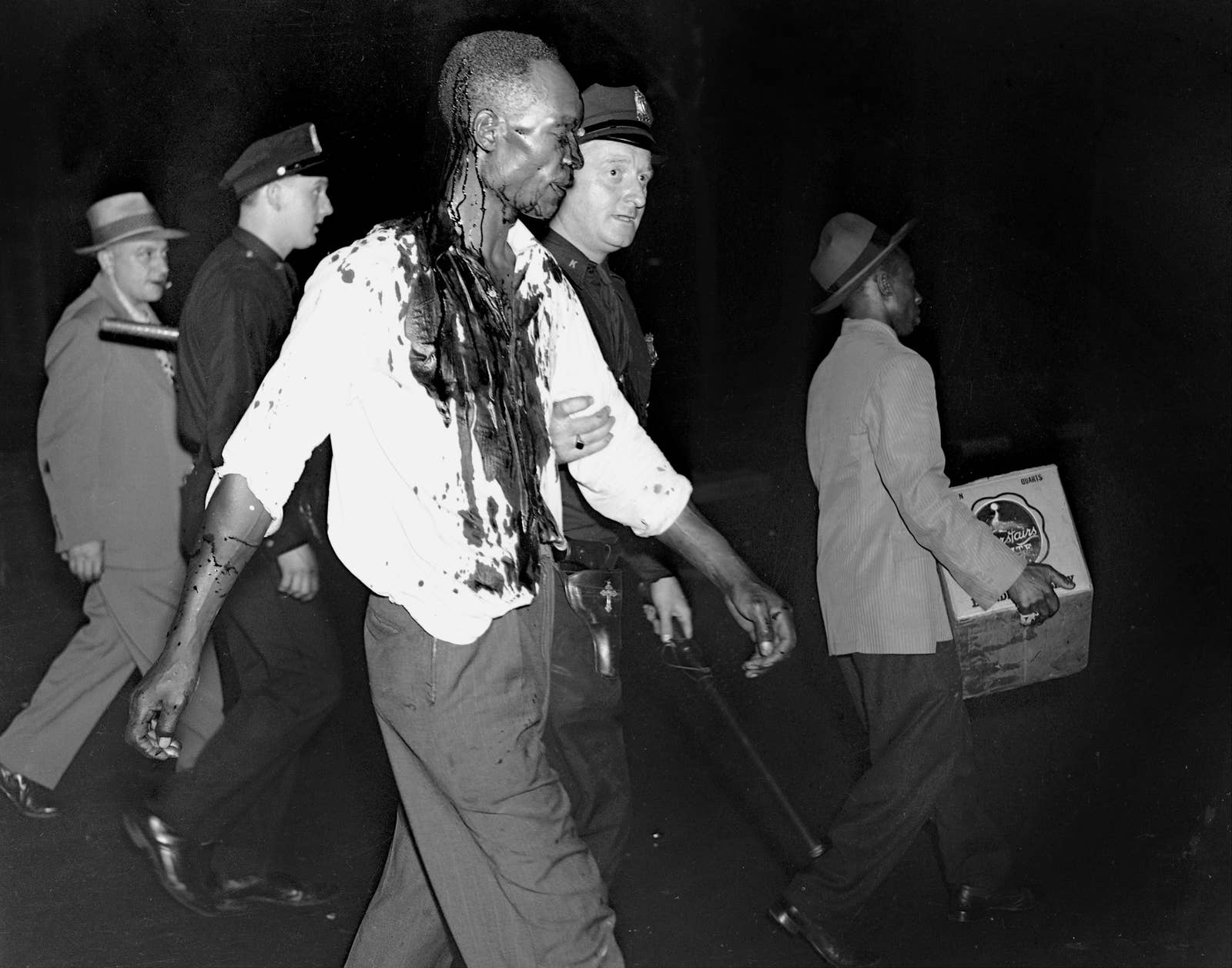
New York Daily News Archive / Getty Image
A man covered in blood is taken to the 123rd Street precinct station, Aug. 2, 1943.
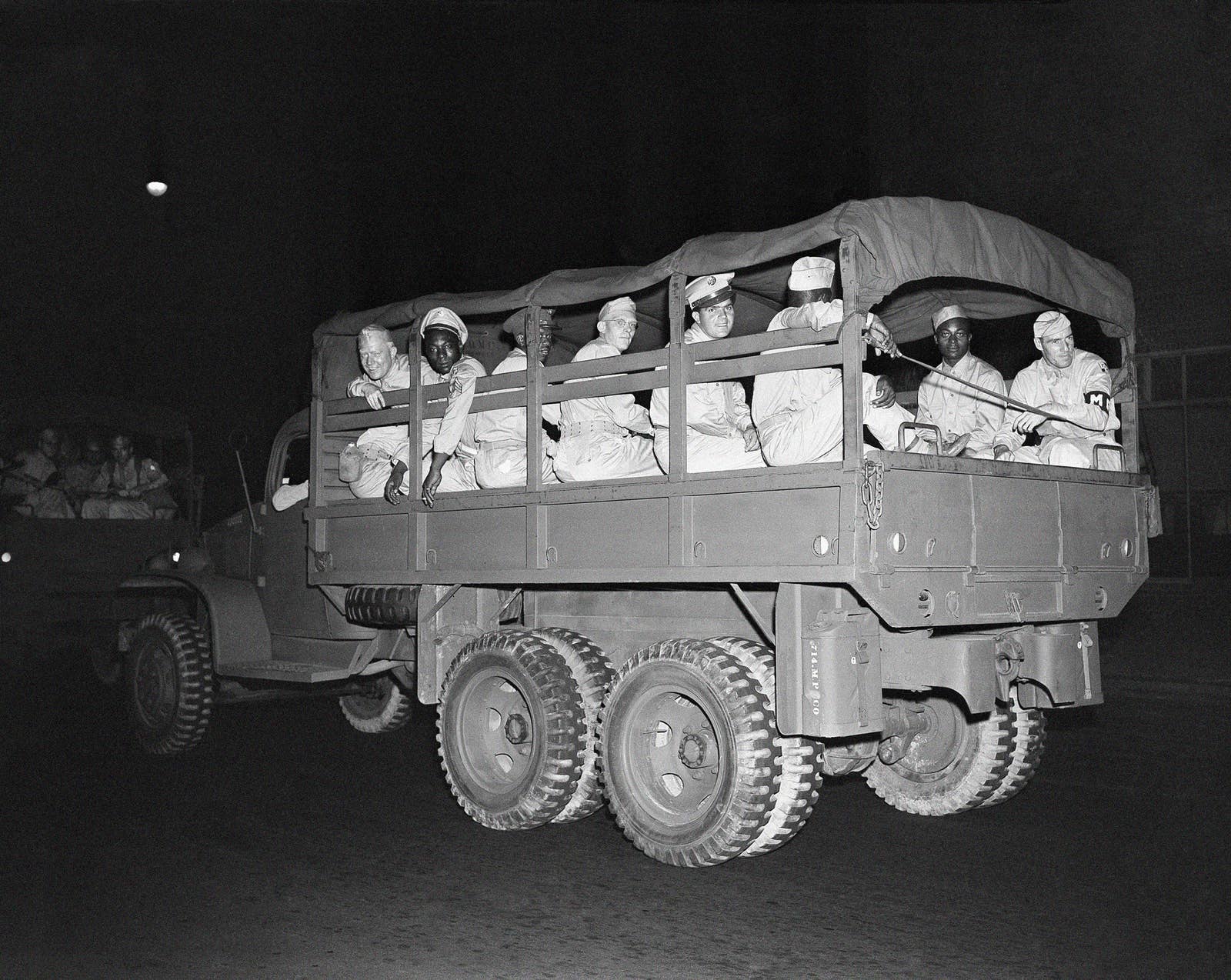
John Lent / AP Photo
A truckload of armed troops was rushed to the Harlem to get all soldiers on leave out of the neighborhood, Aug. 2, 1943. Six truckloads of soldiers patrolled the area.
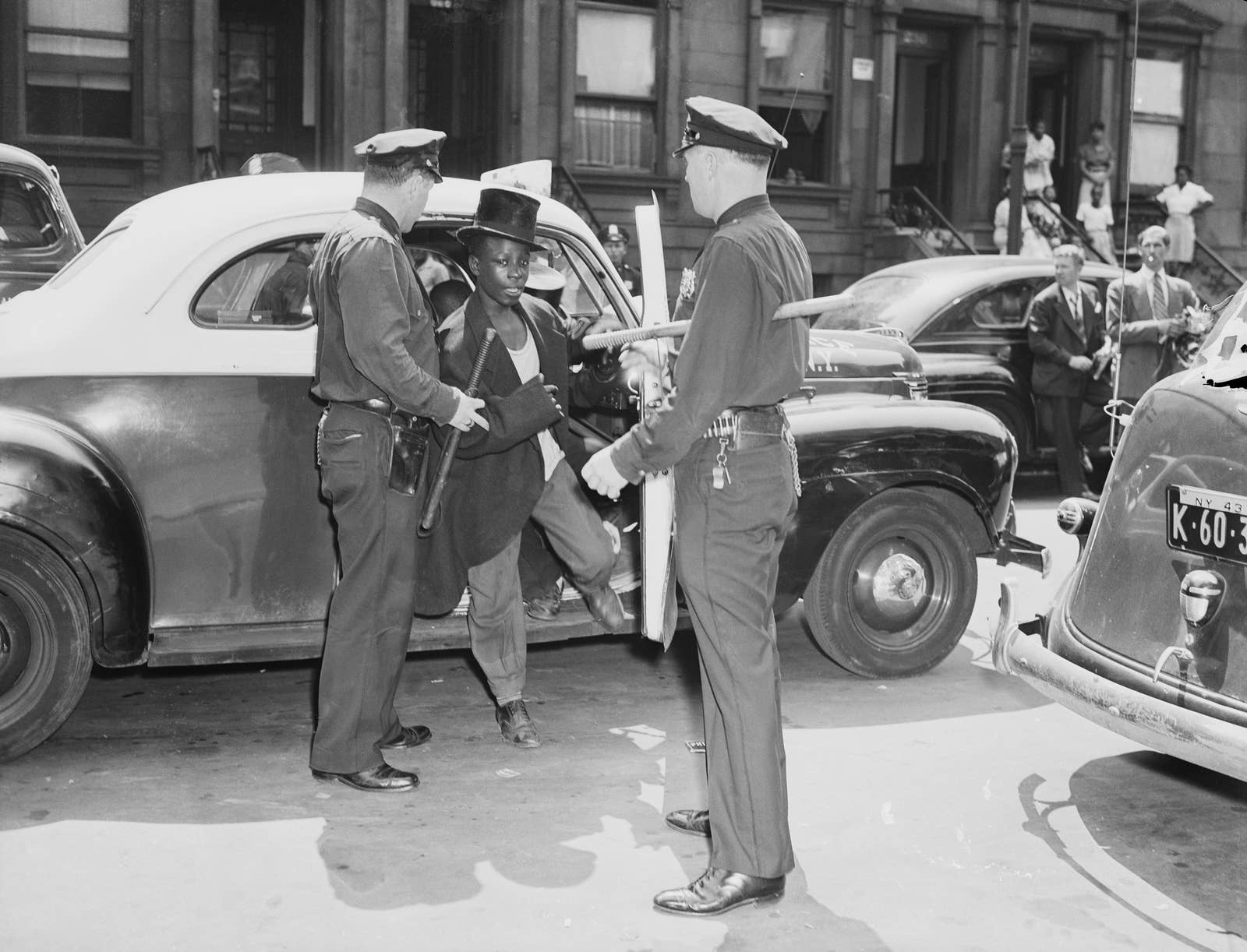
Bettmann Archive / Getty Images
A young man is escorted out of a police car after being held in connection with looting and rioting in Harlem, Aug. 2, 1943.
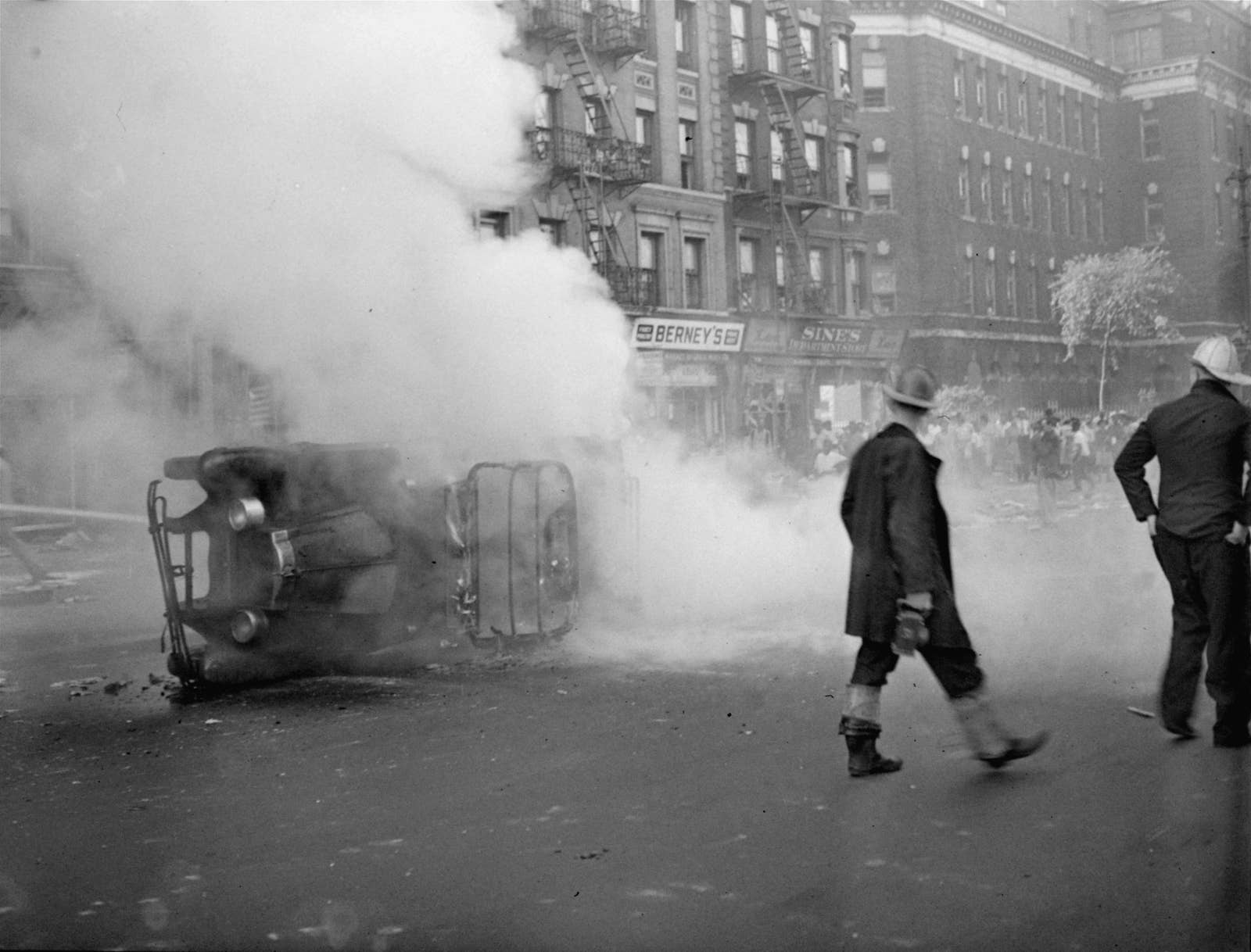
AP Photo
Smoke billows from an unoccupied automobile set on fire in Harlem, Aug. 2, 1943.
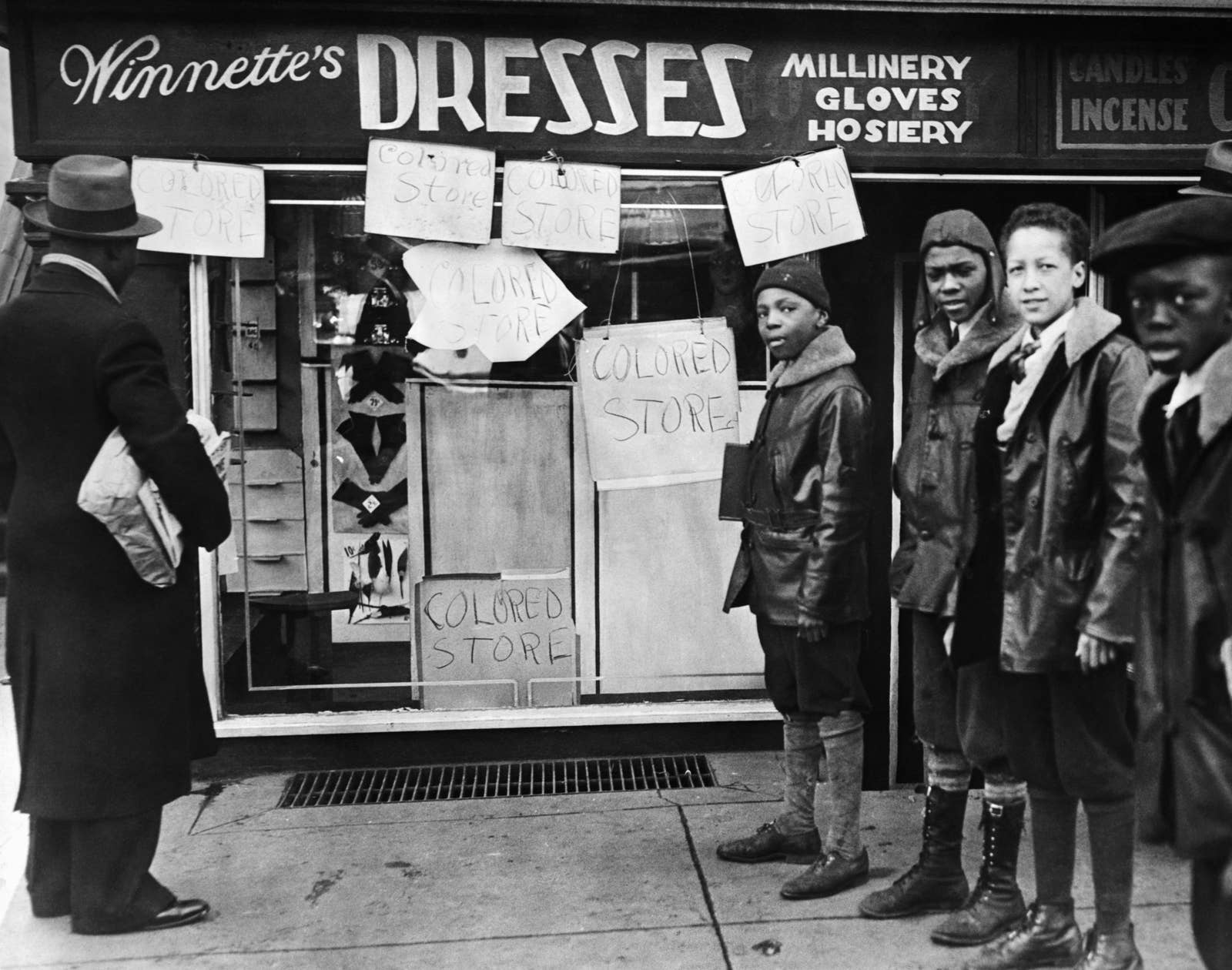
Bettmann Archive / Getty Images
A dress shop has several signs labeled "colored store" affixed to its storefront in Harlem, Aug. 2, 1943.
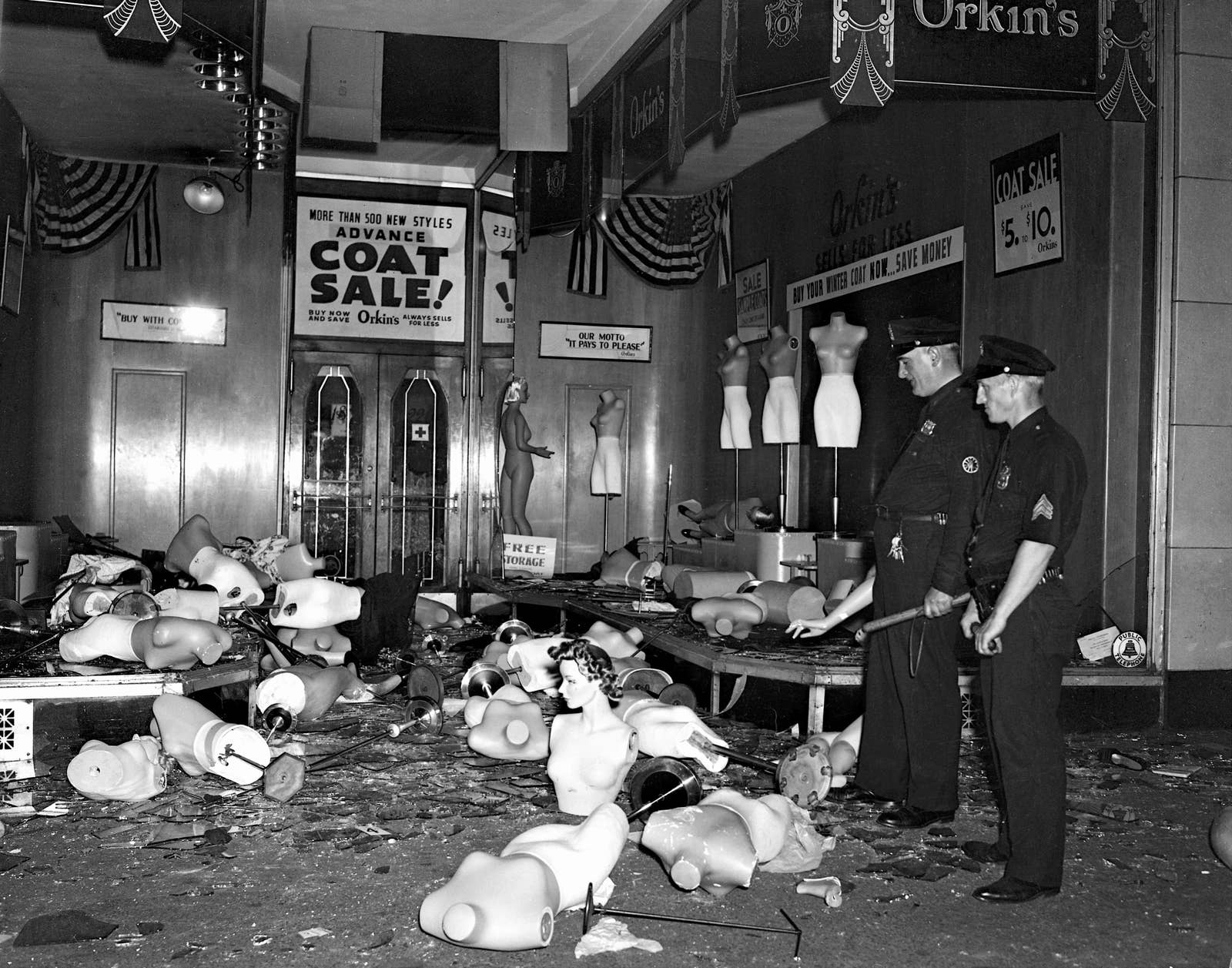
New York Daily News Archive / Getty Images
Broken glass and damaged mannequins are strewn about this wrecked store on West 125th Street in Harlem, Aug. 2, 1943.
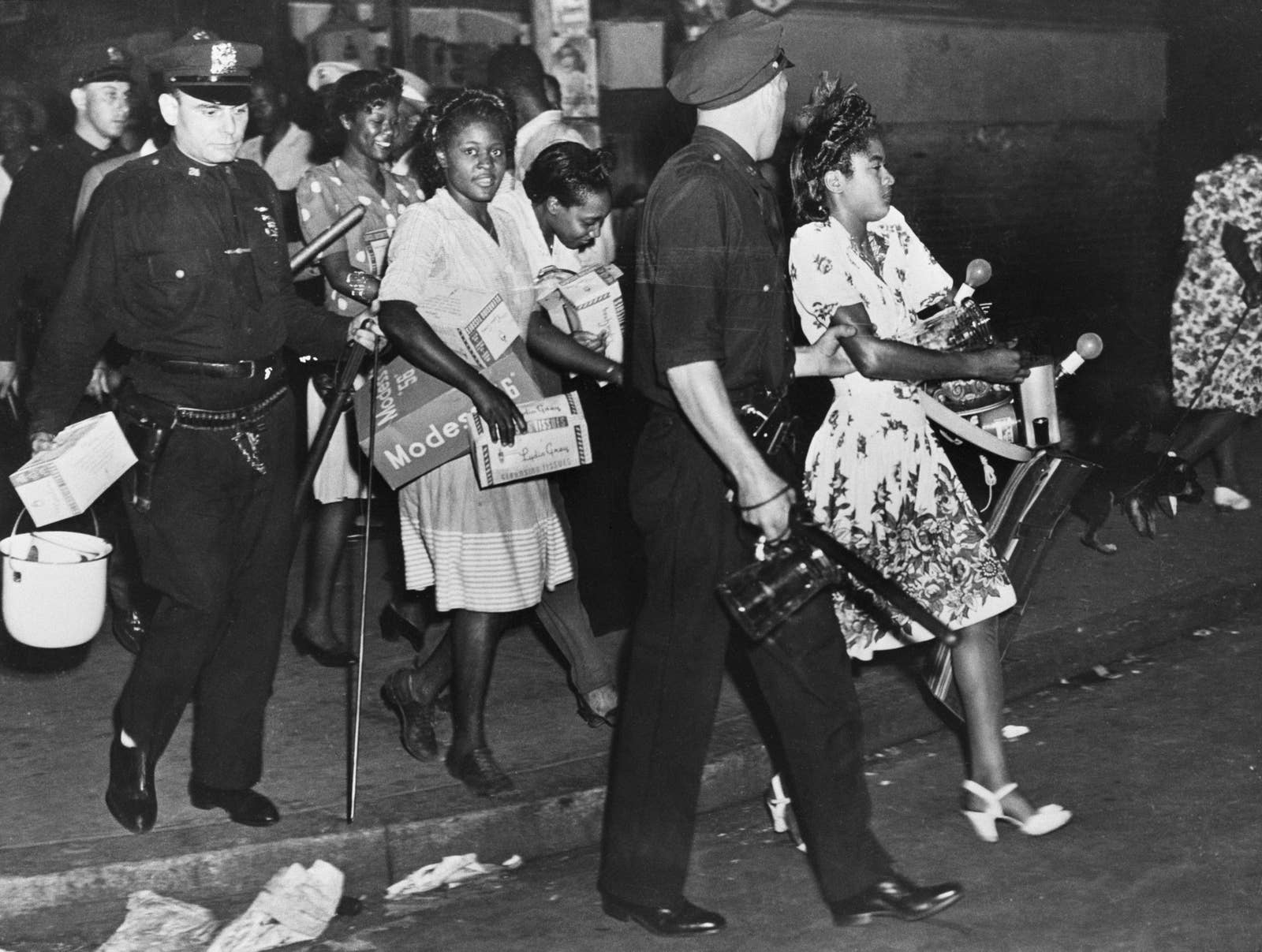
Bettmann / Bettmann Archive
Women are arrested on suspicion of looting in Harlem, Aug. 2, 1943.
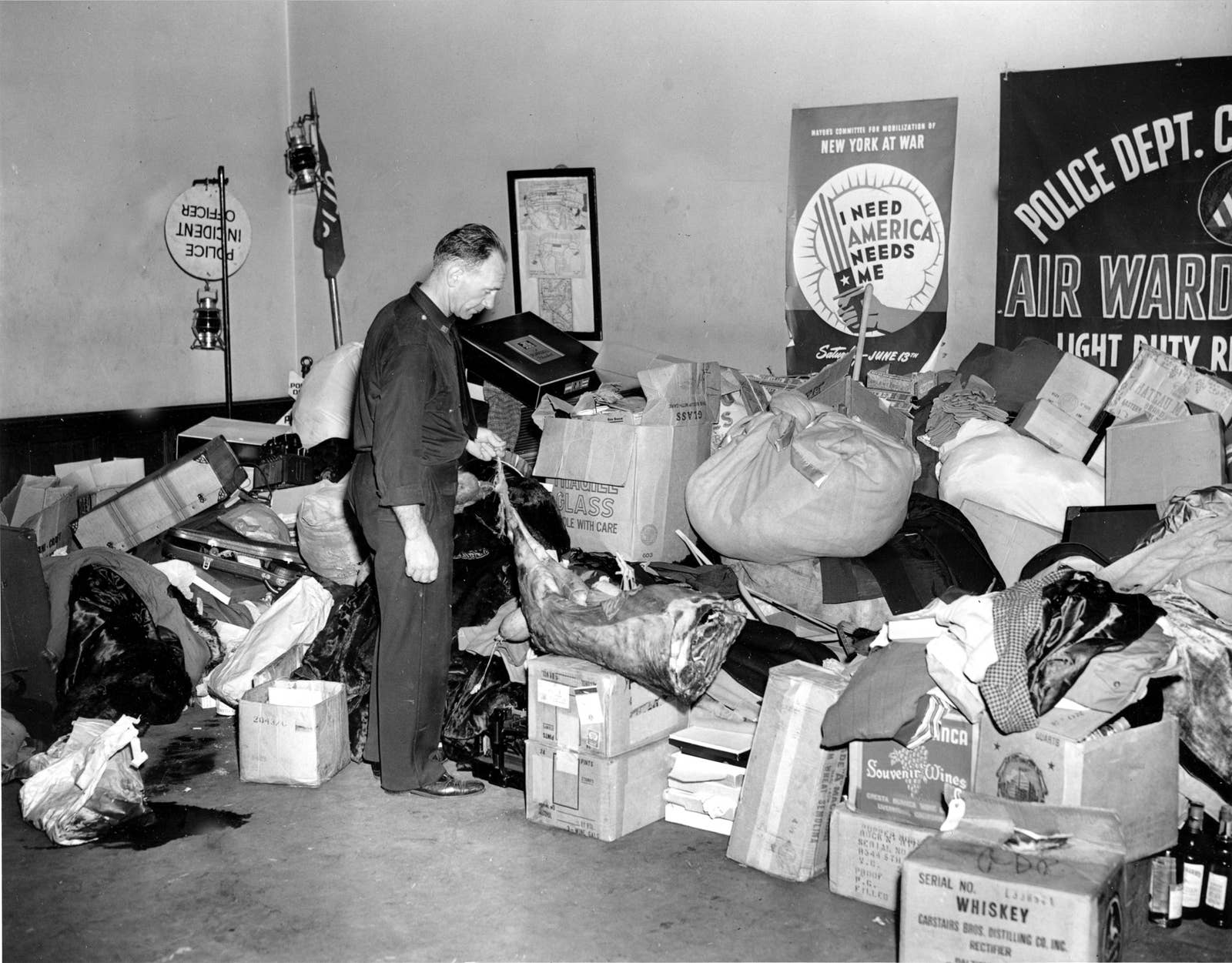
AP Photo
A police officer inspects a rack of lamb among the looted items that police seized from participants in the Harlem riots at the 123rd Street station, Aug. 2, 1943.
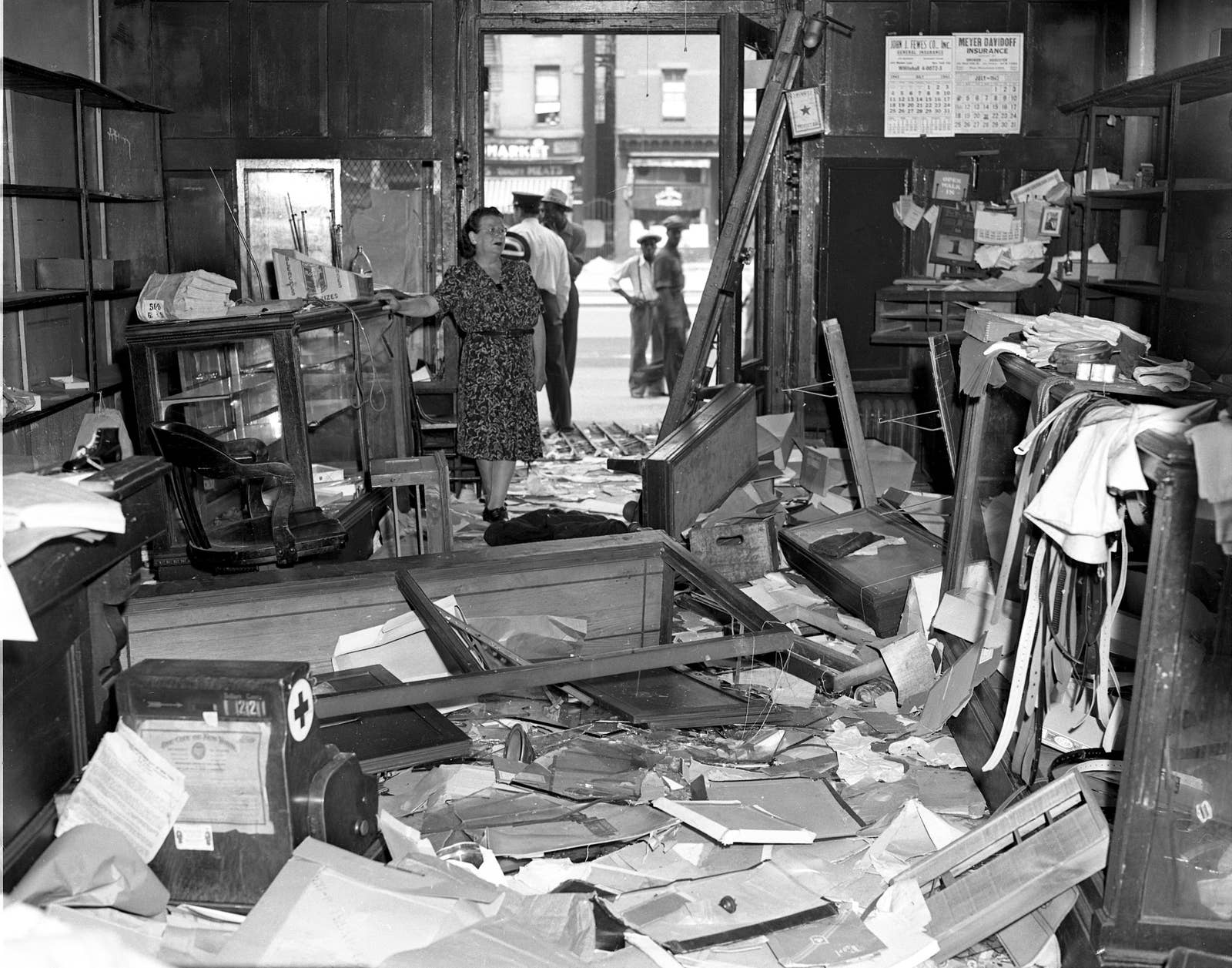
New York Daily News Archive / Getty Images
The aftermath of looting inside this store in Harlem, Aug. 2, 1943.
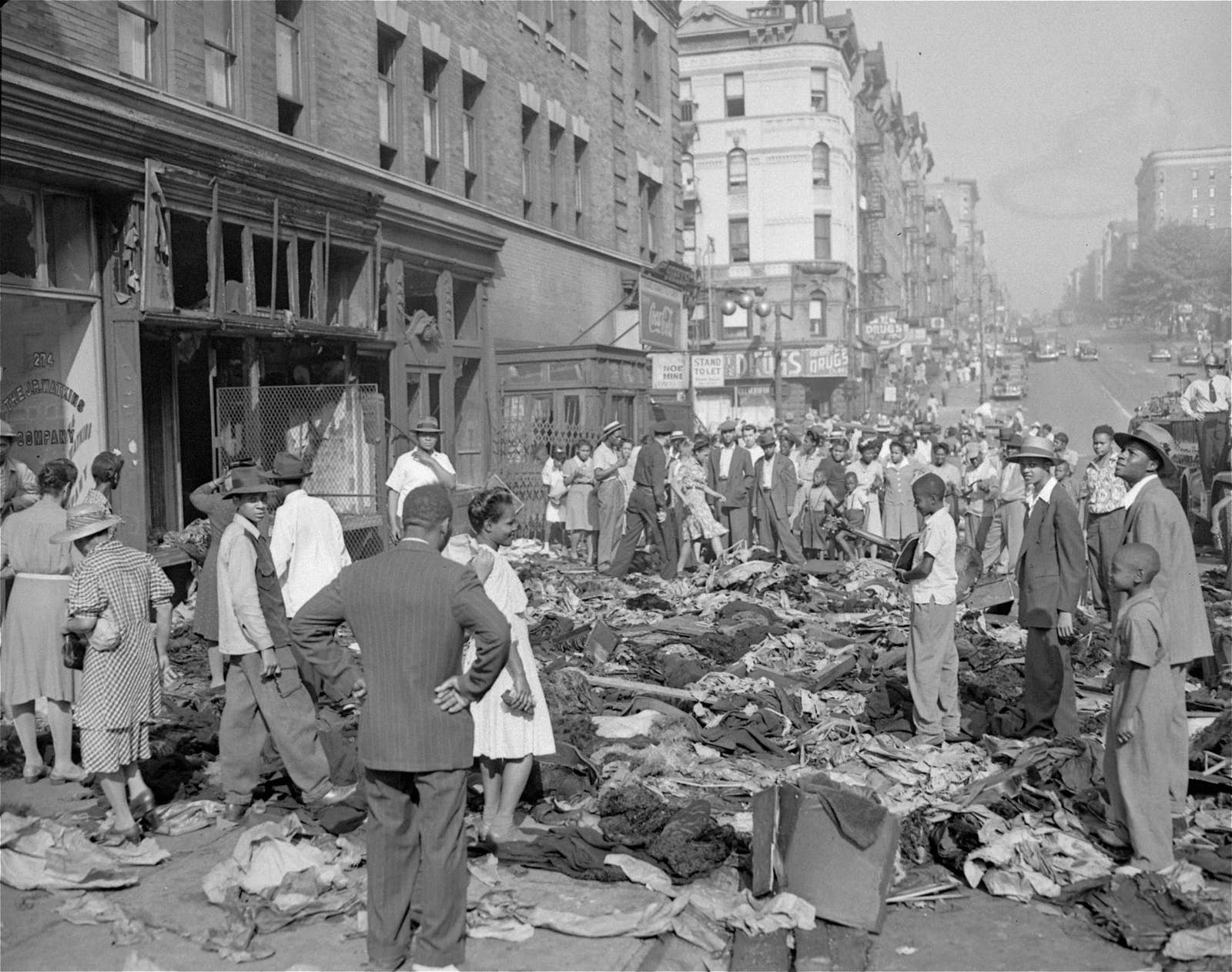
AP Photo
Bystanders look over a pile of merchandise scattered over the sidewalk in front of a pawnshop at 145th Street and Eighth Avenue, Aug. 2, 1943.
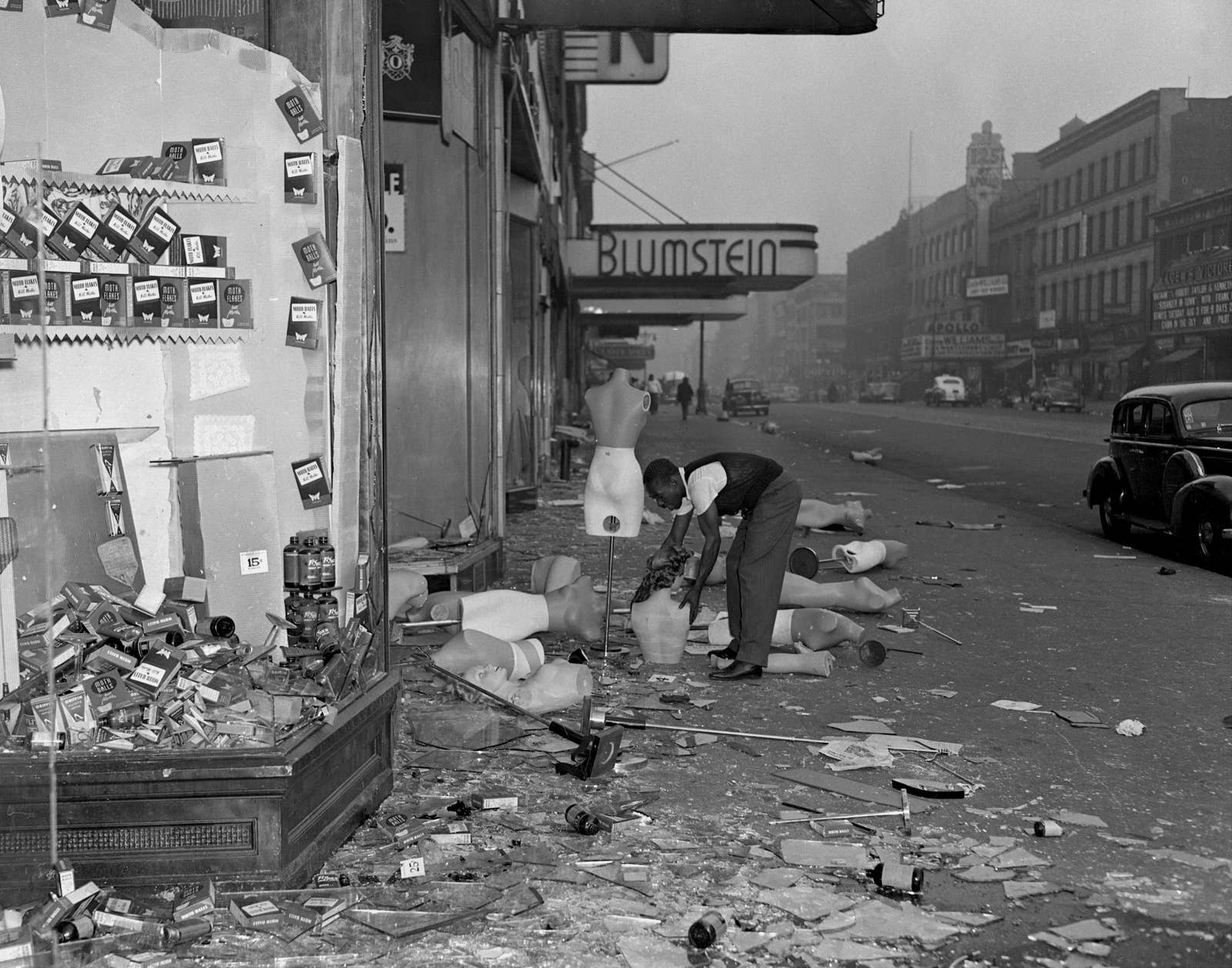
New York Daily News Archive / Getty Images
Damaged mannequins are strewn outside this wrecked storefront on West 125th Street, Aug. 2, 1943.


Kate Bubacz is the Photo Director for BuzzFeed News and is based in New York.

The last time New York City had a curfew, it was imposed by then-mayor Fiorello La Guardia during World War II. It was in response to what was known as the Harlem riots, which started on Aug. 1, 1943, when a young Army private was shot by a white police officer in the Hotel Braddock uptown.

AP Photo
Private Robert Bandy in the Bellevue Hospital prison ward, where he was taken after being shot in the shoulder by a New York City patrol officer, Aug. 2, 1943.
Private Robert Bandy, a young black man on leave from his New Jersey posting, interfered in the arrest of a woman at the hotel and got into a fight with the white police officer. The officer alleged that Bandy tried to grab his nightstick, causing him to discharge his gun. Bandy was wounded in the shoulder and taken to the hospital, but rumors that he had been killed sparked protests.
Tensions around race were already running high, with Jim Crow laws still commonplace in the South. At the same time, black service members were being treated as second-class citizens in segregated military units, despite their contributions to the ongoing war effort. The allegation that a white officer had shot a black soldier resulted in two days of riots, during which hundreds were injured, scores arrested, and dozens of stores — primarily white-owned ones — destroyed.
According to the New York Daily News, La Guardia said the rioting had been "instigated and artificially stimulated" by "radicals." The same publication cited Adam Clayton Powell Sr., the Harlem pastor and activist, blaming "a callous white power structure." La Guardia instituted a 10:30 p.m. curfew, which until this week's protests was the last time the entire city of New York was under curfew.
Within a few days, order was restored in Harlem, Bandy made a full recovery, and the white officer was placed on probation for a year.

AP Photo
Mounted police officers patrol a street in Harlem, New York, Aug. 2, 1943.

AP Photo
Nightsticks are handed out to steel-helmeted volunteers in the police station on 123rd Street in Harlem, Aug. 2, 1943.

/ Associated Press
Police carry an injured unidentified man into Sydenham Hospital in Harlem during the riots, Aug. 2, 1943.

Tom Fitzsimmons / AP
Officers assist people who were injured in street battles into Sydenham Hospital in New York, Aug. 2, 1943. Six people were killed in the riots.

AP Photo
New York City Mayor Fiorello H. La Guardia (center) discusses the protests at the 123rd Street police station, Aug. 2, 1943.

Bettmann Archive / Getty Imag
Crowds in front of shattered store windows in Harlem, 1943.

AP Phot
A liquor store window smashed during unrest in Harlem, Aug. 2, 1943.

New York Daily News Archive / Getty Image
A man covered in blood is taken to the 123rd Street precinct station, Aug. 2, 1943.

John Lent / AP Photo
A truckload of armed troops was rushed to the Harlem to get all soldiers on leave out of the neighborhood, Aug. 2, 1943. Six truckloads of soldiers patrolled the area.

Bettmann Archive / Getty Images
A young man is escorted out of a police car after being held in connection with looting and rioting in Harlem, Aug. 2, 1943.

AP Photo
Smoke billows from an unoccupied automobile set on fire in Harlem, Aug. 2, 1943.

Bettmann Archive / Getty Images
A dress shop has several signs labeled "colored store" affixed to its storefront in Harlem, Aug. 2, 1943.

New York Daily News Archive / Getty Images
Broken glass and damaged mannequins are strewn about this wrecked store on West 125th Street in Harlem, Aug. 2, 1943.

Bettmann / Bettmann Archive
Women are arrested on suspicion of looting in Harlem, Aug. 2, 1943.

AP Photo
A police officer inspects a rack of lamb among the looted items that police seized from participants in the Harlem riots at the 123rd Street station, Aug. 2, 1943.

New York Daily News Archive / Getty Images
The aftermath of looting inside this store in Harlem, Aug. 2, 1943.

AP Photo
Bystanders look over a pile of merchandise scattered over the sidewalk in front of a pawnshop at 145th Street and Eighth Avenue, Aug. 2, 1943.

New York Daily News Archive / Getty Images
Damaged mannequins are strewn outside this wrecked storefront on West 125th Street, Aug. 2, 1943.


Kate Bubacz is the Photo Director for BuzzFeed News and is based in New York.
No comments:
Post a Comment